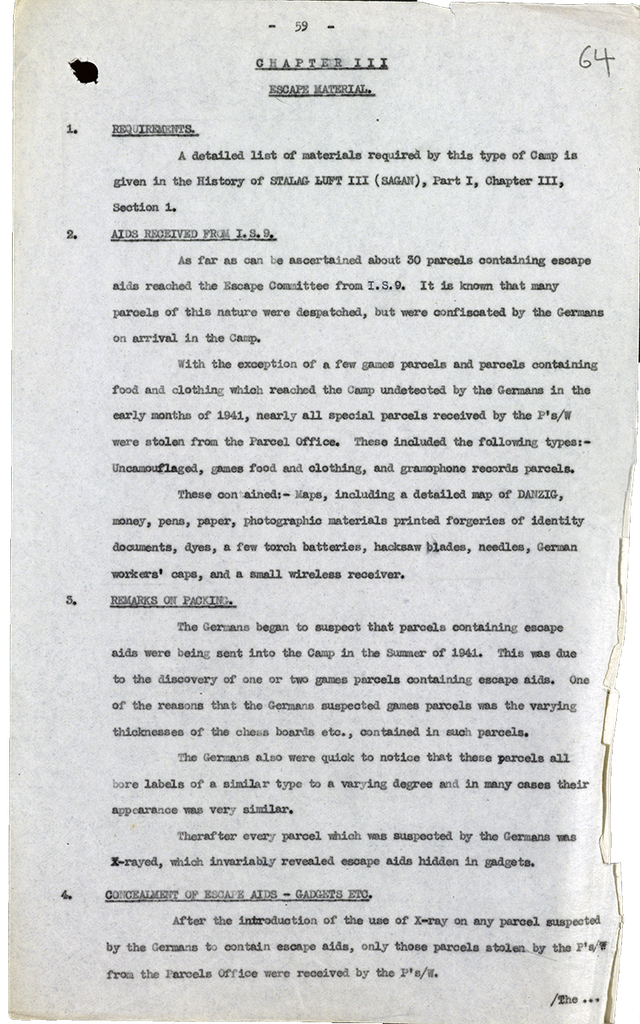Escaping Colditz
Just south of Leipzig, lies Colditz Castle, infamous as a Second World War prisoner of war camp for Allied officers who had escaped other camps or were deemed a security risk. On display in Great Escapes, our records show how internees survived and escaped this seemingly secure fortification.
Photograph of Colditz Castle
Date: 1944
Catalogue reference: View the record N/A in the catalogue
The imposing gothic-style Colditz Castle sits high on a hill above the River Mulde, 25 miles south of the German city of Leipzig. The site was first established in the 11th century. Since then it has been used for a variety of purposes including a hunting lodge, workhouse, mental hospital, sanatorium, political prison, and hospital.
During the Second World War it was used a prisoner of war camp for the most difficult of Allied officers, including those from Britain, France, Poland, Belgium and America. At its peak there were some 800 prisoners of war (POWs) housed there.
This photograph shows you the challenge of anybody wanting to escape. The castle was situated on a hill, above a river, surrounded by barbed wire, and guarded by armed sentries. Despite this, there were more than 30 successful escape attempts including ten by British and Commonwealth Officers.
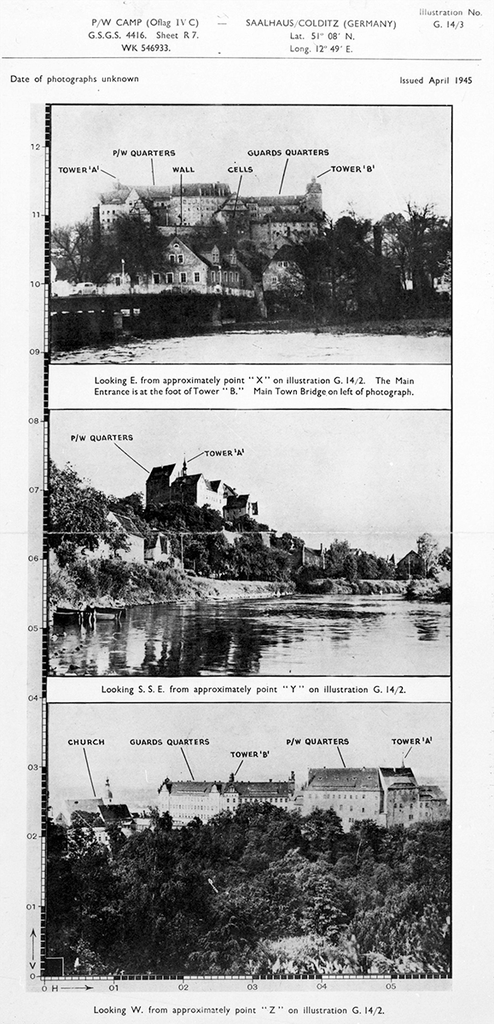
International Red Cross Colditz report
Date: 1941–1945
Catalogue reference: View the record N/A in the catalogue
Run by the German Army, Colditz was governed by the rules of the Geneva Conventions. This stated POWs were to be treated in a certain way including access to minimum levels of medical care, accommodation and food. Camps were also inspected by the International Red Cross, who would check those detained were treated fairly and that conditions were adequate.
This report on Colditz by the International Red Cross states that the camp was too small, restricting the needs of recreation and exercise: 'In the Inspector's opinion first of all the place is not suitable for a prisoners' of war camp'.
Such poor conditions led to low morale among the prisoners of war and ill feeling towards their captors, increasing a desire to escape: 'The consequence is that a psychosis has developed on both sides emphasizing every little difficulty and making a collaboration... very difficult'.
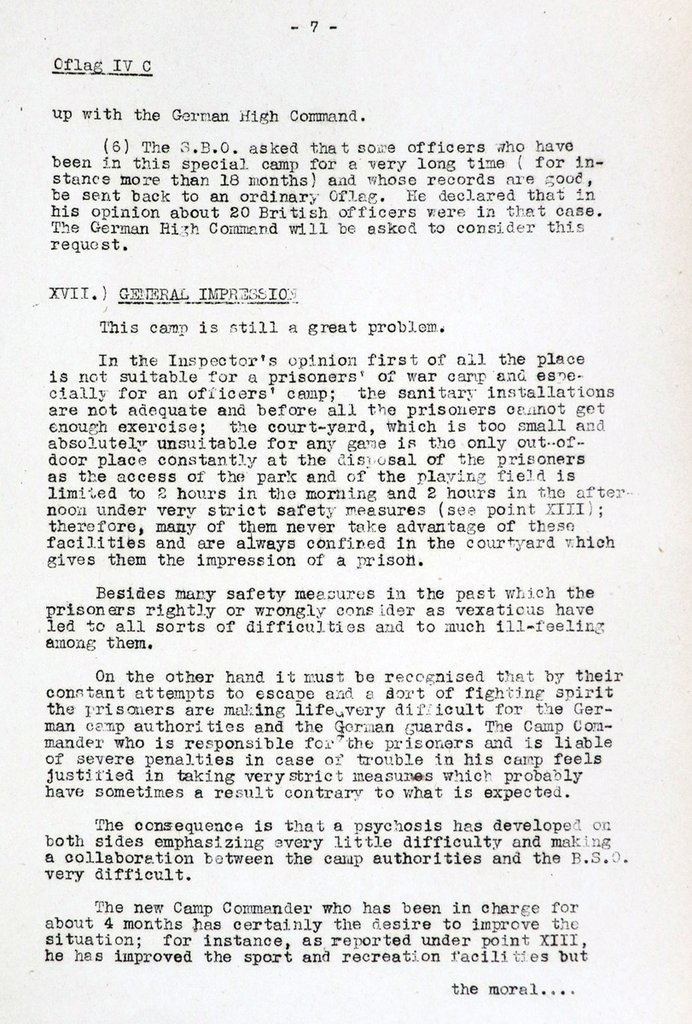
Lieutenant Airey Neave's POW card
Date: 1939–1945
Catalogue reference: View the record N/A in the catalogue
Lieutenant Airey Neave (1916–1979) was one of the tens of thousands of British and Commonwealth personnel captured at French ports following the fall of France in May 1940. Wounded and captured at Calais, he was taken to Stalag XXA near Thorn in Poland. In April 1941 he managed to escape with a fellow POW but was recaptured by the Germans. Following recapture, he was transferred to Colditz.
Neave arrived at Colditz on 15 May 1941 at the age of 25. Life at Colditz was difficult, repetitive, and at times boring. While some reconciled themselves to their internment, others, including Neave, filled their days planning potential escapes.

Neave’s account of his Colditz escape
Date: 1942
Catalogue reference: View the record N/A in the catalogue
Neave tried a number of escapes, all detailed in the MI9 escape reports we hold in the series WO 208. In his account, Neave wrote he was 'convinced that the best method of escaping was by posing as a German'.
His last attempt was made on 5 January 1942, alongside three other POWs, one English and two Dutch. As the document explains, the four officers escaped in pairs, one English and one (German-speaking) Dutch officer, dressed in German uniforms. Imitating German guards they were able to walk away undetected from the Castle.
Neave and Lieutenant Luteyn were the first of the two pairs to leave. Together they successfully reached Switzerland, and later Neave returned to England as the first British officer to escape Colditz. The other pair were recaptured in Ulm, some 300 miles southwest of Colditz.
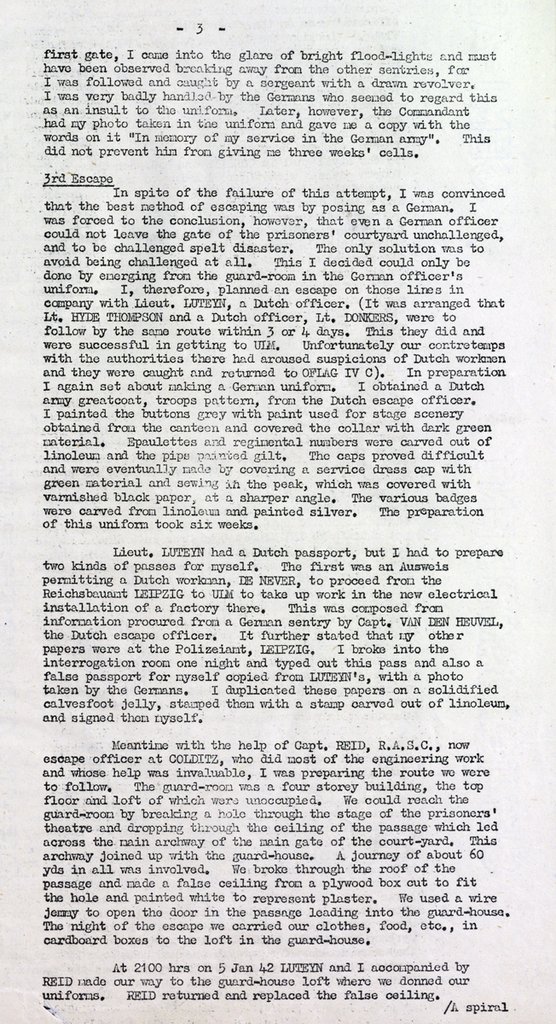
Plan of Colditz
Date: 1940–1945
Catalogue reference: View the record N/A in the catalogue
Back in the UK, Neave went on to work as an intelligence agent for MI9. His work included aiding wider wartime clandestine activities but also specifically providing intelligence on Colditz. He created this detailed plan of Colditz, which would help MI9 understand more about the compound so they could equip others to escape.
The plan highlights the different areas of the camp including the POWs courtyard, the Dutch and English quarters, and the German command block.
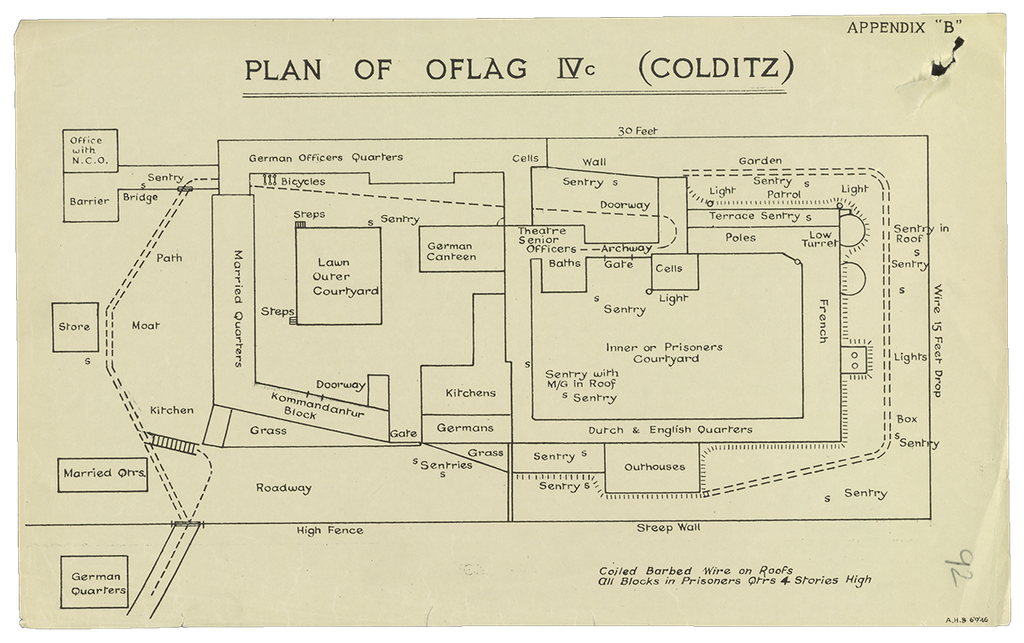
Escape material used by POWs
Date: 1940–1945
Catalogue reference: View the record N/A in the catalogue
IS9 (Intelligence School 9) was set up by the War Office to foster and promote escape attempts. They would dispatch parcels in the hope that they would reach the attention of escape committees of prisoner of war camps across Germany. They would contain heavily concealed or camouflaged materials such as maps, money, pens, paper and identity documents.
This document details the packages sent to Colditz: 'Nearly all special parcels received by the POWs were stolen from the Parcel Office... These contained maps, including a detailed map of DANZIG, money, pens, paper, photographic materials printed forgeries of identity documents, dyes, a few torch batteries, hacksaw blades, needles, German workers' camps, and a small wireless receiver'.
